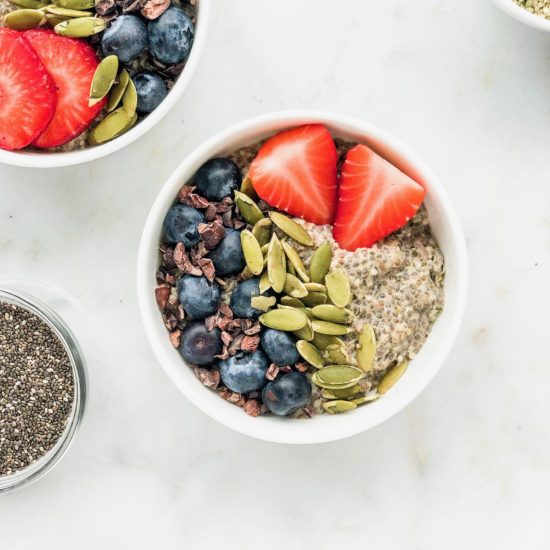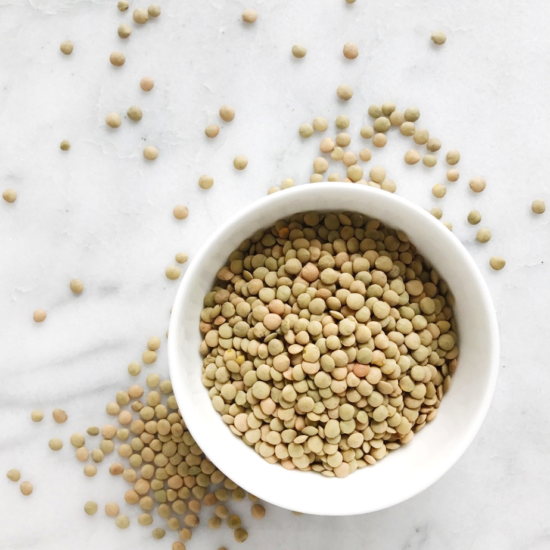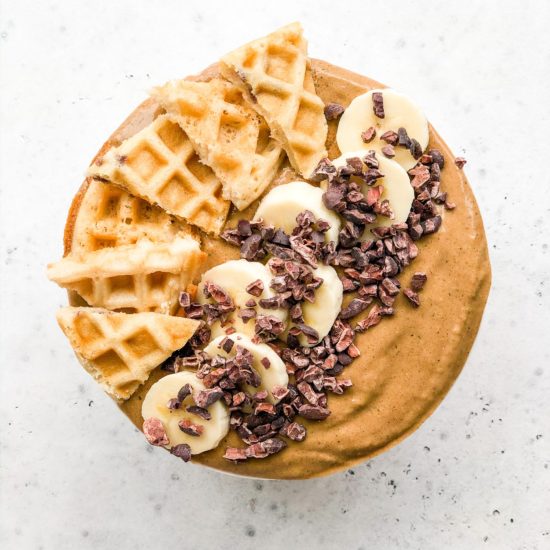Eating a healthy, plant-based diet doesn’t mean you have to give up your favorite foods entirely! It’s all about finding healthier alternatives. There is a healthy swap for just about everything nowadays! From the amazing gluten-free flours to the dairy-free milk and yogurts, you should never feel deprived. I’ve put together a list of simple ingredient swaps to healthify your favorites! Bring this list with you the next time you’re at the grocery store 🙂
Swap White Cane Sugar with Coconut Sugar
When it comes to sugar, all forms should be eaten in moderation. However, there are certain sugars that are “healthier” than others. Coconut sugar is a great replacement for white cane sugar. Coconut sugar is derived from the coconut palm tree and is more nutritious and lower on the glycemic index than sugar. Regular table sugar and high-fructose corn syrup don’t contain any vital nutrients and therefore supply “empty” calories. However, coconut sugar does retain quite a bit of the nutrients found in the coconut palm. Most notable of these are the minerals iron, zinc, calcium, and potassium, along with some short-chain fatty acids like polyphenols and antioxidants. It also contains a fiber called inulin, which may slow glucose absorption and explain why coconut sugar has a lower glycemic index than regular table sugar. This is my favorite sugar to use in cookies, bars, cakes, or any other baked goods!
Swap White Flour with Almond Flour
Almond flour is a popular alternative to traditional wheat flour. It’s low in carbs, packed with nutrients and has a slightly sweeter taste. It may also provide more health benefits than traditional wheat flour, such as reducing “bad” LDL cholesterol and insulin resistance. Almond flour is made from ground almonds. The process involves blanching almonds in boiling water to remove the skins, then grinding and sifting them into a fine flour. Foods made with refined wheat are high in carbs, but low in fat and fiber. This can cause high spikes in blood sugar levels, followed by rapid drops, which can leave you tired, hungry and craving foods high in sugar and calories. On the other hand, almond flour is low in carbs yet high in healthy fats and fiber. These properties give it a low glycemic index, meaning it releases sugar slowly into your blood to provide a sustained source of energy. P.S. Have you tried making homemade bread? This is one my list to master this year! I would love to make homemade, gluten-free bread that I can enjoy for sandwiches or toast.
Swap Canola Oil with Avocado or Coconut Oil
It’s important to understand the difference between oils, as no two are created the same! When looking at different types of oil, keep three things in mind: its smoking point (the temperature at which the oil starts to break down, making it unhealthy, the type of fat that it contains, and its flavor. One of the major drawbacks of canola oil is that it doesn’t come from a natural plant. It’s crossbred, and most canola oil is produced from genetically modified plants (also known as GMOs).
On the other hand, Avocado and Coconut oil are amazing plant-based oils that are great to use when cooking and baking. Avocado oil has a high smoke point. This means that it’s ideal for searing, browning, or baking foods. Avocado oils are high in monounsaturated fats, with polyunsaturated fats about half those of monounsaturated. Coconut oil has a medium smoke point, making it best for using with low-heat baking and sautéing. While coconut oil may be high in saturated fats, it also has a beneficial effect on a person’s high-density lipoprotein (HDL) levels. HDL is also known as a person’s “good” cholesterol, which works to reduce levels of unwanted high cholesterol.

Swap Pasta with Spaghetti Squash or Zucchini Noodles
If you’re a pasta fan, you need to try spaghetti squash or zoodles (zucchini noodles) as healthier, grain-free alternatives. Not only are they lower in calories and carbohydrates, but they’re also rich in fiber. You can make the same delicious spaghetti sauce or pesto and enjoy it with spaghetti squash or zoodles. Your tummy will thank you too 🙂
Swap White Rice with Cauliflower Rice
Now, I know what you’re thinking, “how on earth can cauliflower turn into rice?” Did you know they make pre-made cauliflower rice that you can buy at the grocery store? It’s true! It’s made from one of the healthiest cruciferous vegetables you can get, so it’s loaded with nutrients including fiber, vitamins C, K and B6, and potassium. Cauliflower has 25 calories per cup vs. 218 for a cup of cooked brown rice. Cauliflower rice is easy and fast to make. Plus, it’s delicious! I love using it in burrito bowls and Asian stir-fries.
Swap Cow’s Milk with Almond or Coconut Milk

Cutting back, or better yet, eliminating dairy from your diet can do wonders for your health. Dairy products are extremely acidifying in the body. While the dairy industry has advertised for years that milk makes bones stronger, the opposite happens when you consume a lot of dairy. When you consume milk, it creates a net metabolic acidity in the body. In order to neutralize that acidity, your body draws salts such as calcium and phosphorus from your bones so it can return to its naturally alkaline state. Milk may also contain hormones, antibiotics, and chemicals. That’s why I highly recommend consuming plant-based milk instead of dairy milk. Almond milk is extremely heart healthy and high in Vitamin E, which is a powerful antioxidant. It also has a nice, creamy texture which is especially great for making homemade lattes.
Swap Yogurt with Almond, Cashew, or Coconut Yogurt
Similar to dairy milk, dairy yogurt shares the same concerns regarding acidity, hormones, antibiotics, and chemicals. There are incredible dairy-free yogurts on the market, such as almond, cashew, and coconut. They have the same creamy texture as yogurt and taste delicious! I love making yogurt parfaits with fresh berries and granola.
If you love these tips, make sure to leave a comment below! I love hearing from you 🙂




